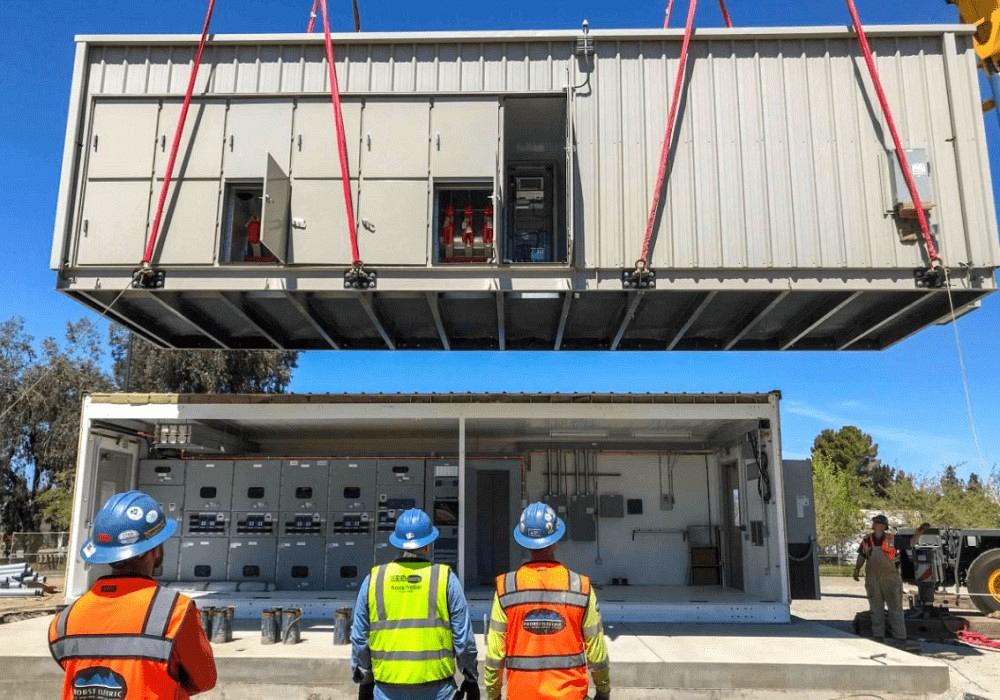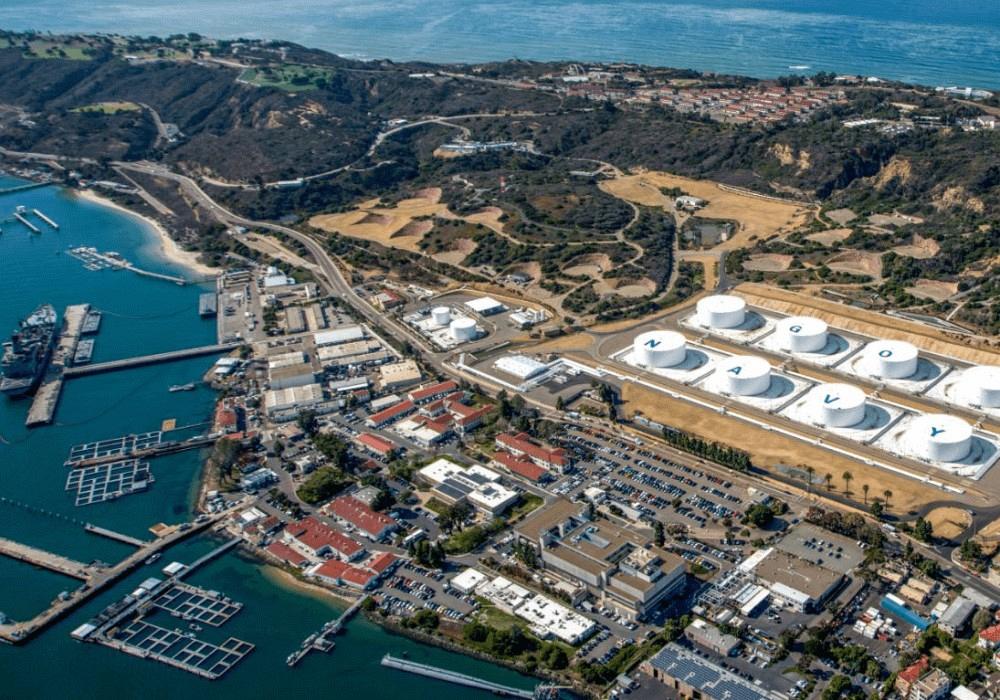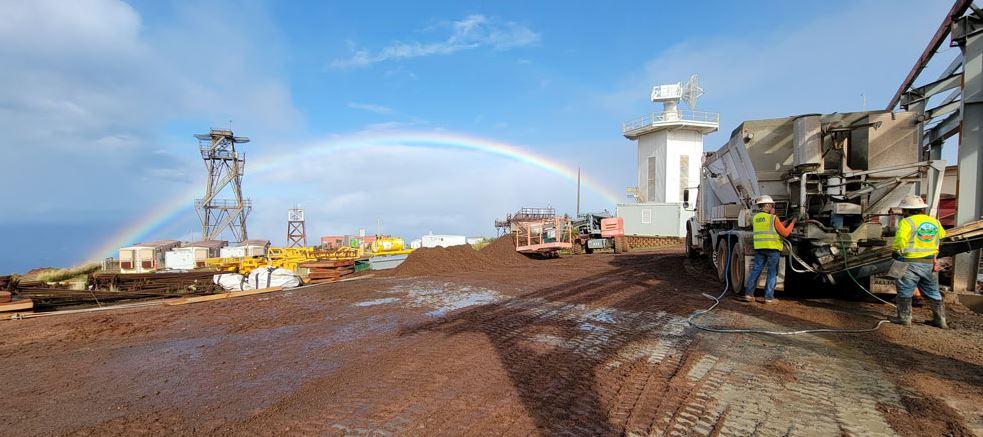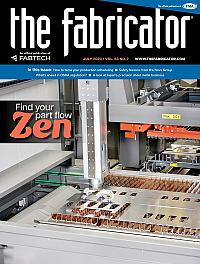Editor-in-Chief
- FMA
- The Fabricator
- FABTECH
- Canadian Metalworking
Categories
- Additive Manufacturing
- Aluminum Welding
- Arc Welding
- Assembly and Joining
- Automation and Robotics
- Bending and Forming
- Consumables
- Cutting and Weld Prep
- Electric Vehicles
- En Español
- Finishing
- Hydroforming
- Laser Cutting
- Laser Welding
- Machining
- Manufacturing Software
- Materials Handling
- Metals/Materials
- Oxyfuel Cutting
- Plasma Cutting
- Power Tools
- Punching and Other Holemaking
- Roll Forming
- Safety
- Sawing
- Shearing
- Shop Management
- Testing and Measuring
- Tube and Pipe Fabrication
- Tube and Pipe Production
- Waterjet Cutting
Industry Directory
Webcasts
Podcasts
FAB 40
Advertise
Subscribe
Account Login
Search
Fabrication shop stays safe by design
8 reasons why Nova Group has had no recordable injury or illness cases over the last six years

Nova Group's fabrication shop supports the work for its construction projects, primarily for defense-related sites, the expansion of the electrical distribution system at Lawrence Livermore National Laboratory in Livermore, Calif.
“If you ask someone in our shop who’s responsible for safety, that person will say, ‘I am,’” said Chris Chell, the engineering, fabrication, and equipment manager for Nova Group, Napa, Calif.
A strong safety culture is always a solid foundation for keeping employees safe. That’s been the case at Nova Group for several years now, as the construction firm’s fabricating operations have enjoyed six years without any OSHA-reported illnesses or injuries, the second such six-year streak in recent memory. More specifically, if you look at the last three years, that’s been more than 300,000 on-the-job hours (89,510 hours in 2020, 106,418 in 2021, and 112,142 in 2022) without injury.
A safety record like that puts a business in select company in the metal fabricating industry. It also makes an organization worthy of the Rusty Demeules Award for Safety Excellence, the Fabricators & Manufacturers Association’s highest safety honor. Nova Group was named the winner of the award at the FMA Safety Conference in early May. (The award is named after longtime former FMA volunteer Lawrence Thomas “Rusty” Demeules, president and owner of Standard Iron & Wire, Monticello, Minn., and former FMA Safety Committee president, who died on May 26.)
Developing an engaged workforce that keeps safety at the forefront of its activities didn’t happen overnight. Nova Group has worked at it for most of the company’s 40-year existence. Here are eight things that stand out, which help this company enjoy years without any OSHA recordable injuries or illnesses.
1. Safety Starts at the Top
With much of its business involving infrastructure work for defense-related facilities all over the world, Nova Group fabricates products for applications like fueling systems for military jets, dry docks for military ships, and electrical distribution systems for government installations. The company’s fabrications end up not only in the U.S., but also internationally, from Australia to Argentina.
From the very start, Nova Group had its own fabrication facility. Company management believed that fabricating under a roof in a controlled environment provided for more consistent results than trying to fabricate on-site. The company also believed in-house fabricating provided more control over potential safety risks.
But it was the nature of the construction business that really fueled the company’s commitment to safety. It’s a business where fatalities are more likely to happen than in a typical sheet metal shop. For instance, according to the Bureau of Labor Statistics, 726 construction trades workers died on the job in 2021, which was the lowest number since 731 died in 2018.
“Both Mike [Enochs, the plant superintendent] and I sit on our corporate safety committee, which is for the whole company, not just the fab shop side, and our president is asking the site safety officer about the biggest risk points on the project and the emergency response plan,” Chell said.
That sort of top-down focus on safety also can be found at Nova Group’s parent company, Quanta Services, a Fortune 500 company dedicated to building and maintaining energy infrastructures around the world. The company has more than 100 operating units under its umbrella.
“The president of Quanta, Duke Austin, has said industry numbers will show you that injuries in construction have trended down over the last 20 or 30 years,” Chell said. “That’s incredible, but fatalities over the same time have stayed relatively flat. That is what we’re chasing right now. He firmly believes that we can do this job without killing anybody.”

Nova Group's fabrication shop supports the work for its construction projects, primarily for defense-related sites, including the replacement of fuel storage tanks for the Navy at Defense Fuel Supply Point (DFSP) Pt. Loma in San Diego.
2. Build in the Capacity to Fail
It sounds like a simple lesson, but if a team takes into account the potential injury risks for a project, it can plan to reduce the risk of those injuries. There’s a reason that handrail is always present in the stairwell; people sometimes have difficulties going up and down stairs.
Again, the stakes are great, in some instances life and death. A lot of the projects that Nova Group tackles involve “stored energy,” as Chell called it. This is energy that can be unleashed if a chain breaks when a crane is lifting a skid, for instance. It has the potential to seriously harm someone.
“The fact is that we are human and we will fail,” Chell said.
Enochs shared a story where pipe was being loaded onto a truck at a job site and the pipe actually rolled off the backside of the load. Before the job of loading the pipe had even started, the group had a meeting to discuss possible failure points, with the backside of the load being the main one. With the injury risk recognized, the team ensured that no one was on the backside during the loading and that a clear path was maintained.
“Because they thought about where to put the people, no one got injured,” Enochs said.
3. A Checklist Can Do Wonders
A checklist is a wonderful tool. It engages an individual, forces them to consider all aspects of an operation, and helps to achieve a goal. For Nova Group, one of the main goals of this tool is keeping employees safe.
The checklist for Nova Group employees comes in the form of what they call the “red book.” In safety circles, red is actually an acronym for recognize, eliminate, and discuss. The goal of the book is to have everyone on the job come together, identify potential hazards, and discuss ways to stay safe. By eliminating any unsafe acts, the team greatly reduces the chances of injury.
“Every employee on the floor is required to fill this out for every task they do,” Enochs said. “So they might have to fill out a couple of pages a day.”
In those pages, the employees log the task, the hazards, preventive steps to ensure safe working conditions, and any mitigative controls used during the task. Once all of this has been discussed and logged in the red book, all of the employees sign it.
“Everyone on the crew is involved in filling it out. It isn’t just one person signing it,” Enochs said.

Nova Group’s fabrication shop supports the work for its construction projects, primarily for defense-related sites. Examples of these projects, including the upgrade of the power plant and electrical distribution system in Kauai, Hawaii.
If something doesn’t make sense or seems unsafe, an employee has what’s called “stop work authority,” according to Enochs. The job doesn’t proceed until that concern is addressed.
Enochs referenced a recent container lifting job where two people manned taglines and another was responsible for hand signals. One person noticed that the tagline wasn’t exactly lined up, so he stopped the guy that was doing the hand signals to let him know that the truck had to back up a little bit more in order for the container to sit correctly on it.
“That just shows you that the process works,” Enochs said.
4. Safety Makes Meetings Meaningful
Meetings can be a waste of time if no forethought is given to preparing for the meetings. Nova Group doesn’t want to be wasting time.
Chell, Enochs, and other leaders meet every morning to discuss topics and happenings that are applicable to the day’s activities. Safety is always a part of this discussion.
Every week, site safety reviews at the shop take place. This involves the president and the vice presidents. Regular topics include incidents, near misses, and leading indicators. All issues are tracked until they are resolved.
A weekly crew safety audit occurs each Friday. Enochs said he picks two different employees each week and he designates an area of the shop for the audit. The two employees look at housekeeping, cord management, and other safety-related factors, and then they report back to Enochs. That review is then shared with the entire shop crew.
5. Training Reinforces Risk Management
The first day on the job, new Nova Group employees start with a two- to three-hour training program that covers workplace safety, the stop work authority granted to all employees, and what’s ahead in future training modules. In those early days, employees are expected to complete the OSHA 10-hour training course, which covers general safety and health hazards.
During the first year, employees also have the chance to learn about the Quanta “capacity model,” where focus is put on incident prevention by always planning and executing a task as if failure is going to happen.
Training continues throughout employment. This includes cardiopulmonary resuscitation and automated external defibrillator training every two years; OSHA 30-hour training, a more in-depth safety review for workers; certified rigger and signal training; and additional training that is required for new activities.
6. People Must Participate
If everyone is responsible for safety, then everyone has to be engaged in the process. Nova Group has taken steps to motivate people to be more aware of the potential for injuries, while at the same time rewarding them for their efforts.
One way the company does this is “safety bingo,” Enochs said. Every Thursday morning, all shop employees get a bingo card. The winner gets $200, provided by the company.
Those that fill out “Good Catch” reports, which call out an unsafe practice, such as operating a band saw without the protective cover over the blade, often receive an extra bingo card. (Sometimes the person that points out the unsafe practice might be rewarded with an on-the-spot recognition and rewarded with “Nova bucks” to be used in the company store, Chell said.)
Chell admitted that the program has had to evolve over the years to encourage participation, not hide injuries. That’s why some safety professionals cringe when they see monetary rewards for injury-free streaks at manufacturing facilities; they fear such incentives encourage nonreporting of incidents and injuries.
“This is more positive. ‘Hey, we appreciate your participation in our safety program this week,’” Chell said.
The shop also has a quarterly barbecue where an employee is honored for working in a safe manner and participating in safety-related activities. This award is voted on by the shop team.
“Everyone always says, ‘What is the secret sauce for our safety program?’” Enochs said. “It’s the guys on the floor. We’ve got a great crew.”
7. Get the Safety Seal of Approval
Nova Group participates in the Voluntary Protection Program (VPP) through California’s Occupational Safety & Health Administration. Yes. The company voluntarily works with state officials to get the ultimate seal of approval for its safety activities.
“This means that we are literally the safest place to work,” Chell said.
To qualify for the VPP status in California, a company has to demonstrate an appropriate level of senior leadership and employee involvement in the company’s safety program. Additionally, state officials conduct a worksite analysis, audit hazard prevention and control measures, and review safety training.
Nova Group achieved “star site” status in 2018 and was recertified in 2021. Chell estimated that the company is one of about 70 sites in the state with that status and the only fabrication shop within that group.
8. Don’t Plan to Stop
Enochs said that with employee engagement comes input on what’s working and what’s not working. That means no one gets complacent because safety efforts are always evolving.
He offered up the red book as an example of the constant change. The book has been updated three or four times based on employee suggestions, which reflect new perspectives on traditional work or changes in the way things are done.
“We’re trying to always strive to find other procedures that will improve our safety programs,” Enochs said.
Chell said that Nova Group is close to rolling out Version 2.0 of the Good Catch program. The new version will have a tracking and trending component to it thanks to software enhancements. The program’s original goal was just to get people to recognize hazards and report them, but the next version will allow for more thorough reporting. For example, Chell said that managers will be able to see where the focus of a majority of the Good Catch reports are. If they are related to personal protective equipment, leadership can spend more time talking about that and raising awareness among the workforce.
“Safety is a journey,” Chell said. “There’s no end to it.”
About the Author

Dan Davis
2135 Point Blvd.
Elgin, IL 60123
815-227-8281
Dan Davis is editor-in-chief of The Fabricator, the industry's most widely circulated metal fabricating magazine, and its sister publications, The Tube & Pipe Journal and The Welder. He has been with the publications since April 2002.
subscribe now

The Fabricator is North America's leading magazine for the metal forming and fabricating industry. The magazine delivers the news, technical articles, and case histories that enable fabricators to do their jobs more efficiently. The Fabricator has served the industry since 1970.
start your free subscription- Stay connected from anywhere

Easily access valuable industry resources now with full access to the digital edition of The Fabricator.

Easily access valuable industry resources now with full access to the digital edition of The Welder.

Easily access valuable industry resources now with full access to the digital edition of The Tube and Pipe Journal.
- Podcasting
- Podcast:
- The Fabricator Podcast
- Published:
- 04/16/2024
- Running Time:
- 63:29
In this episode of The Fabricator Podcast, Caleb Chamberlain, co-founder and CEO of OSH Cut, discusses his company’s...
- Trending Articles
Tips for creating sheet metal tubes with perforations

Supporting the metal fabricating industry through FMA

JM Steel triples capacity for solar energy projects at Pennsylvania facility

Fabricating favorite childhood memories

Omco Solar opens second Alabama manufacturing facility

- Industry Events
16th Annual Safety Conference
- April 30 - May 1, 2024
- Elgin,
Pipe and Tube Conference
- May 21 - 22, 2024
- Omaha, NE
World-Class Roll Forming Workshop
- June 5 - 6, 2024
- Louisville, KY
Advanced Laser Application Workshop
- June 25 - 27, 2024
- Novi, MI


























